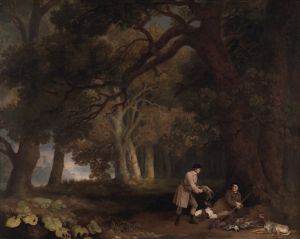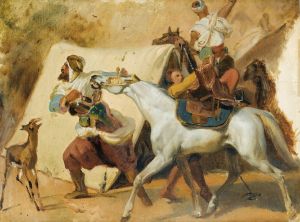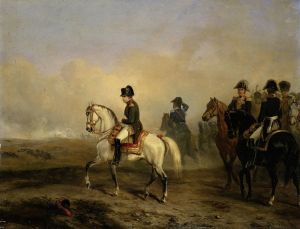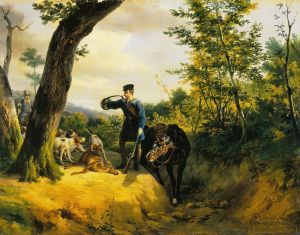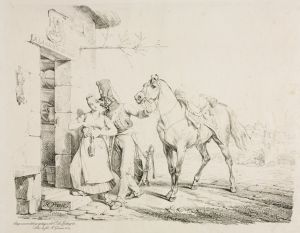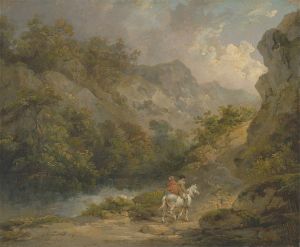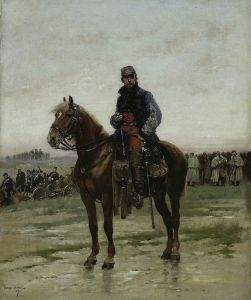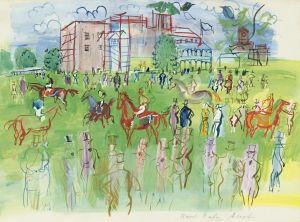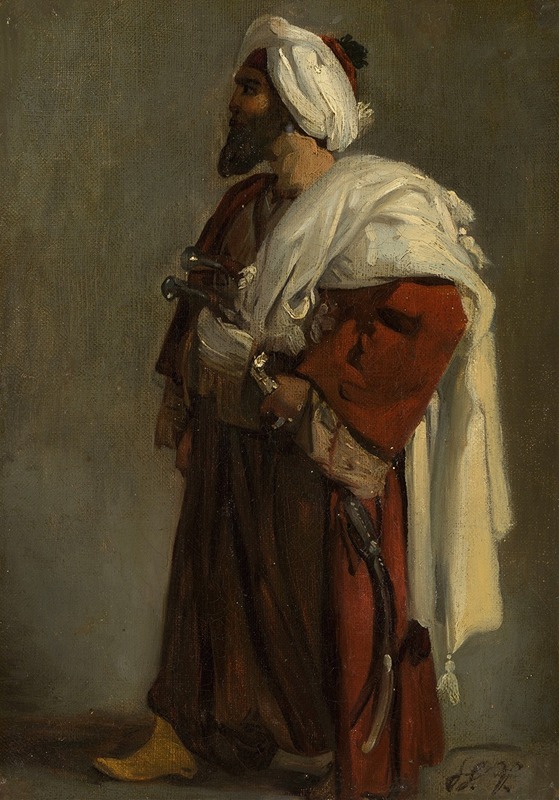
Arab Warrior
A hand-painted replica of Horace Vernet’s masterpiece Arab Warrior, meticulously crafted by professional artists to capture the true essence of the original. Each piece is created with museum-quality canvas and rare mineral pigments, carefully painted by experienced artists with delicate brushstrokes and rich, layered colors to perfectly recreate the texture of the original artwork. Unlike machine-printed reproductions, this hand-painted version brings the painting to life, infused with the artist’s emotions and skill in every stroke. Whether for personal collection or home decoration, it instantly elevates the artistic atmosphere of any space.
"Arab Warrior" is a painting created by the French artist Horace Vernet in 1833. Vernet, born in 1789, was a prominent painter known for his works that often depicted military subjects and scenes from contemporary history. He was a significant figure in the Romantic movement, which emphasized emotion and individualism, as well as the glorification of the past and nature.
The painting "Arab Warrior" reflects Vernet's fascination with the exotic and the heroic, themes that were popular in European art during the 19th century. This period saw a growing interest in Orientalism, a term used to describe the depiction of Eastern cultures by Western artists. Vernet's work often included detailed and dramatic representations of people and events from the Middle East and North Africa, regions that were of particular interest to European audiences at the time.
In "Arab Warrior," Vernet portrays a solitary figure, an Arab warrior, who is depicted in a moment of calm yet alert readiness. The warrior is dressed in traditional attire, which includes a flowing robe and a turban, and is armed with a rifle and a curved sword, known as a scimitar. The attention to detail in the warrior's clothing and weaponry highlights Vernet's dedication to authenticity and his skill in rendering textures and materials.
The background of the painting is relatively simple, focusing the viewer's attention on the figure of the warrior. The landscape is arid and sparse, suggesting a desert environment, which adds to the sense of isolation and the harsh conditions that the warrior must endure. The use of light and shadow in the painting enhances the dramatic effect, with the warrior's face partially illuminated, creating a sense of depth and intensity.
Vernet's "Arab Warrior" is not just a depiction of a solitary figure but also a reflection of the broader cultural and political context of the time. During the early 19th century, France had significant military and colonial interests in North Africa, particularly in Algeria. Vernet's painting can be seen as part of the larger narrative of French engagement with the region, capturing the romanticized view of the "noble savage" that was prevalent in European art and literature.
The painting is an excellent example of Vernet's ability to combine technical skill with a keen sense of drama and narrative. His works were highly regarded during his lifetime, and he received numerous commissions from the French government and other patrons. "Arab Warrior" remains a testament to Vernet's talent and his contribution to the Romantic movement in art.
Today, "Arab Warrior" is held in the collection of the Musée des Beaux-Arts in Lyon, France. It continues to be appreciated for its artistic merit and its historical significance, offering viewers a glimpse into the 19th-century European perspective on the Middle East and North Africa.






